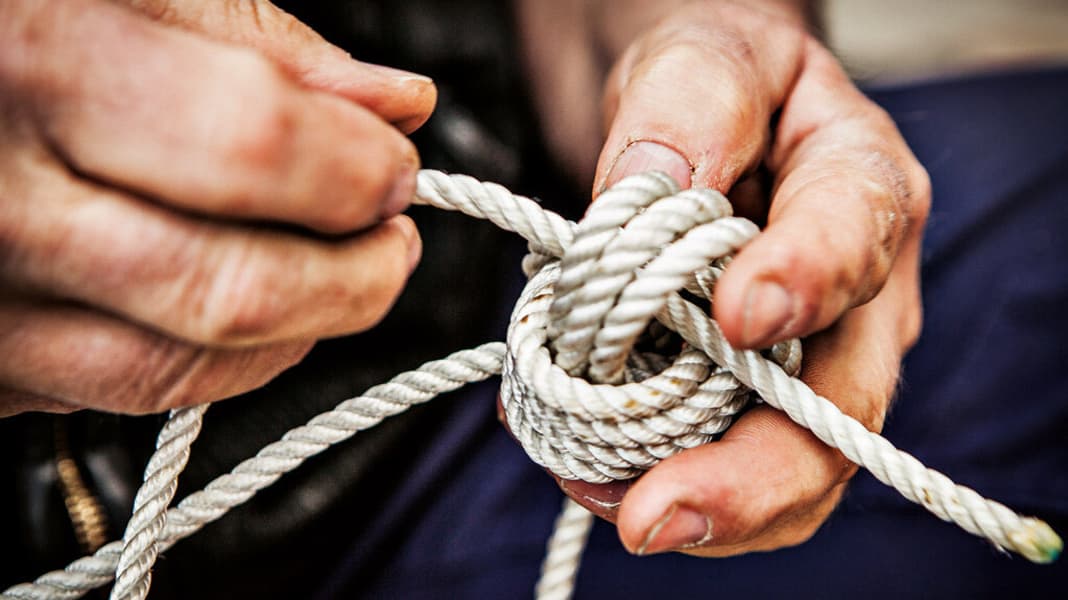
Even before the exam for their first boating licence, some candidates despair at the knots and lines they are asked to tie. Yet the correct handling of ropes is one of the basics of seamanship. But where is the middle ground between practical utility knots and traditional gimmicks? And do occasional sailors even have to learn the craft of Splicing master?
In any case, you should these six nodes can - and also the You shouldn't have any problems with mooring a cleat.
In this article:
The bowline
In the beginning was the Bowline. Probably the best-known sailor's and yachtsman's knot is often used as an all-rounder for all kinds of tasks. The Knot and cordage expert Egmont Friedl explains the normal method of tying it, and there are several variations, including the one-handed method.
If you are really hooked on the art of knotting, you can familiarise yourself with the book "Knots - splicing - rigging" deeper.
The weaving line
One knot, many names: Weaving machineThe rope is used to attach a line to an object and should be part of every crew member's equipment. Basically, it is used to attach a line to an object and should be part of every crew member's armoury.
Cross knot and two half hitches
The Cross knot is a "knot classic" and for the Connection of two ends of equal strength intended. Knotted in just a few seconds, it is easy to untie again, even after heavy use. Nevertheless, caution is advised, as one wrong turn and the knot will immediately undo itself under stress. Also in the video: two half strokes.
The Schotstek
But what do you do if the two ends to be connected do not have the same diameter? For example, if a thick hawser is to be connected to a much thinner line? Here comes the Sheet pile which is used to connect two lines of different diameters. With the Double sheet stay is simply a more resilient version of the Schotstek with a double end stop.
The stopper bar
The name says it all: the Stopper bar the line attached to a running end can only be moved without a load. As soon as force is applied to the fixed part, the stopper bar stops and transfers the load. By hitting the other end, it clamps it. It can be used to attach one line to another, for example to a towing line, or to temporarily relieve the load on a sheet when changing winches.
Throwing and placing mooring lines correctly
It's actually basic sailing school knowledge. Nevertheless, it's a classic in the harbour cinema: crews who throw the mooring line into the water as a twisted ball - and thus fail to achieve the class objective. The subsequent flinging of the now wet and heavy tampon into the faces of the friendly helpers also meets with little approval. However, mooring lines can be thrown ten metres with precision and without much difficulty - with the right technique.
